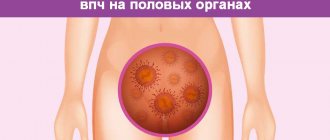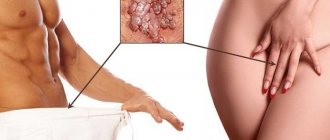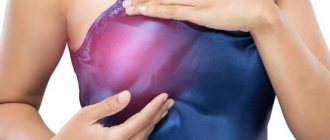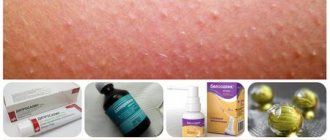Women's sanitary pads have become so firmly established in our everyday life that representatives of the fairer sex can no longer imagine a normal existence without them. From a hygienic point of view, they are of course useful, especially on “critical days” they make a woman’s life more comfortable and easier. However, few people realize their harmful effects on the female body. As a practicing specialist in female pathologies with extensive experience, I can confidently say that the daily use of pads by women undoubtedly causes them harm.
Unfortunately, we have to admit the fact that modern young girls, starting from puberty, from about 13 years of age, already begin to actively use these hygiene products. They are simply hostages of the huge advertising that is now simply pouring into the ears of our youth from all possible sources of information, citing the advantages of pads, but not a word mentioning their contraindications for daily use.
How they work
The structure of gaskets can be different, because a variety of materials are used for their manufacture.
Gaskets
Modern pads have an inner layer that includes cellulose and an absorbent substance that turns moisture into a gel.
The outer layer of such products can be made of different materials.
It can be natural cotton or a synthetic substance with a porous structure. Thanks to this, the product retains its shape well and does not wrinkle during use.
To ensure that the products remain in place when moving, special glue is applied to the bottom surface, which allows you to attach it to underwear.
There are also so-called wings on the sides - they secure the gasket well in the right place.
Daily
Such products have a simpler composition, which includes three layers - top, bottom and absorbent.
Moreover, the latter consists only of cellulose.
Superabsorbent polymer is not used in the manufacture of such products.
Tampons
These products are usually made from compressed cotton wool, which is stitched in the central part.
Tampons are cylindrical in shape and equipped with a special cord for removal.
This hygiene item is inserted into the vagina, after which it absorbs all secretions, taking the shape of the body. After use, the tampon is removed from the vagina using a string.
We study the composition of products
The components and configuration of these personal hygiene items are different. The top layer is a thin mesh that allows you to accelerate the absorption of liquid into the sorbent inside. Substances - sorbents retain moisture, turning it into a gel form. To ensure that the pads retain their shape, fit snugly to the curves of the female body, and protect clothing from bleeding, they contain synthetic analogues of natural, hypoallergenic materials. It is these substances that can cause irritation and subsequent allergic reactions.
Various components of personal hygiene items
How to prevent allergies to pads
Since an allergy to pads sometimes leads to undesirable consequences, it is better to prevent it than to treat it. Following simple recommendations will help avoid the development of an allergic reaction.
- Do not wear panty liners all the time; the real need for their use arises a few days before the start of menstruation and within 2 - 3 days after its end.
- During periods without menstruation, refrain from using daily pills at night.
- Buy simple products without flavors or dyes.
- Allergic reactions are least likely to be caused by natural absorbent substances, such as wood cellulose, so carefully study the composition of the filler before purchasing.
- Change sanitary pads every 2 to 4 hours to prevent them from becoming a source of pathogens.
- Be sure to wash your hands before changing the pad.
- Select sanitary pads according to the amount of discharge.
- Use products with a good adhesive base, which will prevent the gasket from creasing and rubbing the skin.
- Choose comfortable underwear made from natural fabrics.
Gynecologists believe that healthy women do not need to constantly use sanitary pads; regular changes of underwear, as well as washing in the morning and evening, are enough for them. If you have to use scented panty liners because of heavy discharge with an unpleasant odor, you should consult a specialist, as this may be a sign of a chronic infection.
When comprehensive treatment for an allergic reaction does not bring positive results, consult your doctor again for a vaginal smear test. Worsening of the condition may be caused by pathogens and not by wearing sanitary pads. Finally, remember that it’s not just pads that cause allergies; other intimate hygiene products, lubricants, spermicides, condoms, and even your partner’s seminal fluid can be the cause.
What products are worth buying - review of manufacturers
There are a number of products that do not cause allergies in the sensitive area. Hypoallergenic pads for critical days:
- "Naturella";
- "Carefree";
- "Kotex";
- "Ola."
There are special hypoallergenic pads for critical days, designed for reusable use. They are made of cotton and do not cause irritation even for those with hypersensitive skin.
Irritation to hygiene products is rare in women. The risk of unpleasant sensations is associated with the use of flavorings and coloring agents in their production.
Recommended Diet
At first glance, it may seem that eating habits do not matter in this case, because the allergy does not arise from a food product.
In fact, poor diet can cause an even worse skin reaction.
Therefore, during treatment, it is advisable to remove all allergenic foods from the menu.
These include the following:
- chocolate;
- coffee;
- citrus fruit;
- spices;
- sour juices - apple, currant.
During this period, it is advisable to eat familiar foods. At the same time, you should avoid fried, salted and pickled foods.
During therapy, it is better to eat the following:
- porridge;
- dairy products;
- boiled meat and fish of lean varieties;
- green apples;
- cucumbers;
- zucchini;
- low-fat soups.
Also, the diet must contain a sufficient amount of liquid. It is best to drink clean water, which will help remove toxic substances from the body.
Features of manifestations in pregnant and postpartum women
During gestation, manifestations of allergies rarely occur. This is usually due to hormonal and immune changes in the body of the expectant mother. Under the influence of hormonal surges, the vaginal microflora and urine acidity change, which aggravates allergic manifestations. During this period, the female body is most susceptible to external stimuli. The symptoms at the moment do not differ from the above-mentioned signs of a reaction to an irritant on the part of the body.
During the postpartum period, an allergic reaction to hygiene products is possible, the reason for this is:
- weakened immunity caused by previous labor;
- hormonal imbalance;
- mechanical damage to the mucous membrane of the birth canal;
- insufficient absorption capacity of the chosen hygiene method.
Manifestations of allergies rarely occur during pregnancy.
The most common cause of adverse reactions is considered to be incorrect, insufficient hygiene procedures, and untimely change of hygiene items.
The influence of price on quality
Many girls are sure that price has a direct impact on the quality of pads.
Indeed, products from well-known brands are considered to be of quite high quality.
However, many manufacturers use various marketing techniques to increase the cost of hygiene products.
They add various herbs, flavors and balms to their products. However, this does not mean that such an increase in cost is justified.
It is quite possible to choose a quality product at an affordable price.
What to do if you are allergic to wheat? Read on.
How does an allergy to silver manifest? Details here.
Allergy to pads
Can you be allergic to pads? Allergies from pads can bother women and cause severe discomfort. This happens because hygiene products contain components that can cause allergies in sensitive intimate areas.
Allergy to sanitary pads symptoms It is almost impossible to confuse that you are allergic to sanitary pads with something else. Those who doubt whether there may be an allergic reaction to pads or a gynecological disease should take a close look at the symptoms: the appearance of a rash, swelling, redness accompanied by severe itching. Very rarely, more serious manifestations of allergies can occur, since it all depends on the characteristics of the woman’s immunity. Symptoms of an allergy to panty liners are the same as when using regular pads. Most often, allergies are caused by pads with fragrances, since the inner layer of such pads contains various fragrances. Another source of allergens are dyes. It is advisable to avoid using colored intimate hygiene products. The pad must be changed every three hours, as long-term use increases the risk of bacterial or fungal infection. You need to purchase fragrance-free pads made from natural materials. Panty liners should not be used at night. Allergy to pads treatment
If symptoms of an allergy to pads appear while using them, the first thing to do is to reduce the symptoms of skin inflammation and relieve irritation. Cold water helps with this. Cold water reduces blood flow to areas of inflammation, which will reduce itching. Itching can be reduced with vodka or diluted alcohol. The itching is relieved almost instantly, but this is not a treatment, but a relief of discomfort. Chamomile is a versatile herb that relieves symptoms and promotes healing. Allergies to pads are treated with cool compresses with chamomile infusion. Antihistamine ointments can be used in treatment. If you need to use panty liners at night due to excessive discharge, you should consult a doctor as soon as possible. Allergy to sanitary pads, including allergy to panty liners, symptoms should disappear within a week after treatment. If recovery does not occur, consultation with a specialist is necessary. The doctor will prescribe a specific course of treatment and tell you about possible methods of prevention.
Why do hygiene products cause itching and irritation?
To understand the mechanism of allergic reactions to hygiene products, you need to find out what features the pads have depending on their purpose.
For menstruation
These products are designed to absorb and retain blood during the menstrual period. They have impressive dimensions and contain sorbent and gel impregnation. An allergy occurs when the delicate skin of the genitals is exposed to the gel with which products of this type are impregnated. Sometimes irritation from pads during menstruation can be caused by the aggressive environment of the discharge, with insufficient absorption capacity of the absorbent filler.
During menstrual periods, women use hygienic methods of protection
Daily
The thinnest ones are products for daily use. Their goal is to maintain the cleanliness of the delicate area and linen every day. They absorb vaginal discharge and small drops of urine residue. The need for these hygiene products arises during the ovulatory process. They are used before the start of the expected menstruation and for several days after to prevent spotting from getting on clothes. You cannot do without them in the first trimester of pregnancy, during the formation of a mucus plug.
Women often do not wonder whether they may be allergic to panty liners, but in vain. Not everyone adheres to the rule regarding the frequency of changing pads every day. Neglecting simple hygiene rules can lead to irritation of the mucous membranes and epithelium of the external female genital organs. In addition, pathogenic bacteria actively multiply in a humid environment and can cause a number of gynecological diseases.
Tampons
The most popular are tampons, the use of which does not require disruption of the usual rhythm of life. With them you can dance and play sports, wear tight trousers, shorts, and go to the beach.
With all the positive qualities, tampons provoke:
- the appearance of microtraumas on the walls of the vagina;
- delay the outflow of blood, causing reverse blood flow into the uterine cavity, tubes and peritoneal cavity;
- disruption of the vaginal microflora, which contributes to the growth of the population of staphylococcus bacteria;
- rarely can cause a bacterial infection, subsequent toxic shock.
Causes of allergies
Most often, allergies develop to panty liners, especially if they are scented.
In the groin area, the skin is particularly tender and sensitive, and therefore susceptible to the influence of negative factors. Modern women use three types of pads:
- Panty liners. Used to protect underwear from vaginal discharge and urine droplets. Most often, allergies develop to this type of product, especially if they are flavored.
- Sanitary napkin. Used to collect menstrual blood. They have more absorbent gel, but no fragrance. Allergies to them occur less frequently and only when used during menstruation.
- Urological pads. Used for urinary incontinence. Could you be allergic to them? Extremely rare because they are made from natural materials. They are fragrance-free and gel-free.
Factors have been identified that increase the likelihood of developing allergies.
- Lack of hygiene. If a woman rarely changes pads, underwear, and neglects to wash, they become a breeding ground for germs and bacteria, which leads to the penetration of infections into the body and the development of a painful reaction.
- Epilation in the intimate area. During epilation, many microcracks form on the skin, so it becomes more sensitive. Those who remove hair from the bikini area complain of itching, rashes and ingrown, inflamed hair. For this reason, the risk of a sensitive, painful area reacting to pads increases if they contain dyes or flavors.
- Flavors and dyes. Any fragrance has a synthetic base, which can lead to an allergic reaction, just like many dyes.
- Glue. It is applied to a part that is not in contact with the skin, but has an effect on living tissue, as it is made from chemical components.
- Gel. This is the layer located in the middle of the product. Used to retain moisture during menstruation. But the gel has a chemical composition that causes a painful reaction.
- Greenhouse effect. Microorganisms that are conditionally pathogenic live on the genitals. They can cause inflammation. Even high-quality products do not protect against this, because they are made from materials that do not allow air and moisture to pass through, creating a greenhouse effect. In such an environment, microbes multiply at tremendous speed, as a result of which the homeostasis of the genital lining is disrupted.
- Gasket material. The skin does not like synthetics, especially if it is in close contact with it. The cotton layer has anti-allergenic properties, but wrinkles quickly, so it is unpopular.
The likelihood of an allergy to pads is higher in people prone to various allergic reactions. Allergies to sanitary pads can develop in teenage girls for the same reasons
It is important to teach them hygiene and to choose products for them especially carefully.
Can you be allergic to pads?
An allergy to sanitary pads is a negative reaction of a woman’s body to the substance from which the sanitary product is made. It may include:
Products with natural composition wrinkle and their protection is not very effective. Synthetic pads hold their shape better and protect against leaks and stains on clothes. But they are most often the source of allergies.
In addition to harmful substances, an allergy to pads can be caused by poor hygiene.
Most often, women are allergic to Olweiss, Naturella and Libress pads. The negative reaction is due to the flavorings in their composition and the coating used to make the top layer. After using these products, severe itching, redness, swelling and rashes of varying intensity are often observed.
Sometimes there is an allergy to Naturella pads, and the use of Olweiss does not cause side effects. Everything is individual. As an alternative to conventional pads, you can use their phyto-analog. For example, Sun herbal. Their features:
This hygiene product contains: yellow sophora, spicy sumac, Japanese torylis, Amur velvet.
Allergies to pads can be treated quite simply at home (provided that there is no swelling of the genitals).
- Rinse the affected area with cool water, which will relieve itching and irritation, and also reduce blood flow to the skin (do not use intimate hygiene gels because they contain chlorides).
- You can wipe the problem area with an alcohol solution. This will help relieve discomfort.
- You should use a chamomile decoction as a wash or compress at night. This product cleanses, relieves inflammation and redness.
- The use of antihistamines for external use is acceptable, but their choice should be left to the doctor. The following ointments are suitable for therapy: Purelan, Solcoseryl or Arnica.
- You can use therapeutic pads and hypoallergenic wipes for therapy and prevention.
- An infusion of medicinal speedwell, calendula or nettle has proven itself well (pour boiling water over the herb and leave for 2 hours). It can help relieve itching and inflammation.
- Comprehensive treatment of the disease necessarily includes a hypoallergenic diet, excluding salty, fried, spicy, spicy foods and alcohol. You should not consume natural juices, red fruits and vegetables, as well as coffee and chocolate during this period.
Compliance with the water regime is mandatory.
Prevention
There are ways to avoid a negative reaction:
- A sanitary pad is primarily a hygiene product, so it needs to be changed at least 3-4 hours after starting use. Otherwise, not only an atopic reaction may develop, but also cystitis, thrush or vaginitis.
- You should use only sanitary pads with natural ingredients in their composition, without fragrances, dyes (colored hygiene products) or patterns.
- You should immediately consult a doctor if using a pad is necessary due to heavy discharge. This is a sign of increasing body work.
- This hygiene product should not be used at night.
- When changing a pad, be sure to wash your hands.
- The hygiene product should be stored in a dry place.
More and more people are experiencing allergies of various types. Negative reactions to pads are not that uncommon. Some women prefer not to notice it, continuing to use cheap hygiene products. This is dangerous and can lead to an exacerbation of the disease, which can no longer be treated at home.
First aid when symptoms appear
When irritation from pads occurs, not everyone knows what to do first. Let's start in order:
Eliminate the cause
At the first sign of irritation, the leak-proofing agent should be removed. When discomfort decreases, you can look for an alternative that does not cause such a reaction. The market offers hypoallergenic products without the use of chemical irritants.
Wash the skin using special products
Doctors recommend bathing with cool water to reduce blood flow to the genitals. This will help relieve burning and itching. As auxiliary products, preparations for intimate hygiene with lactic acid bacteria are used, such as Lactacid, Epigen, Femina.
Preparations for intimate hygiene are used as aids
Apply ointment
External use will help reduce pastosity, hyperemia, burning, and reduce the area of rashes:
- "Fenistil - gel";
- "Bepanten - cream or ointment."
The composition of the drugs does not involve hormonal inclusions, quickly relieves discomfort and promotes healing.
How to prevent irritation
It is better to prevent any disease than to treat it. Follow basic hygiene rules to avoid an allergic reaction.
You should stop wearing panty liners all the time. Objectively, they are needed only a couple of days before and after menstruation, when traveling or other extreme situations when it is not possible to wash and change underwear every day.
You need to choose only high-quality and natural products without colored prints, flavors, or fragrances from a trusted manufacturer. Make sure that the adhesive and absorbent are non-toxic.
In some cases, the time of contact of the surface of the pads with the skin of the genitals plays a decisive role. Therefore, change them as often as possible (ideally every 2-4 hours). Be sure to wash your hands before each shift.
Select a gasket model in accordance with the nature and abundance of discharge. For example, you should not wear a super-absorbent night model during the day. It is much larger in size, which means it has a larger area of contact with the surface of the external genital organs. You need to wear only comfortable and high-quality underwear.
If a woman follows all of the above recommendations, and the irritation does not go away, then, most likely, the selected pads are simply not suitable, even when it is written on the box that they are the most natural and breathable.
httpss://www.youtube.com/watch?v=RK_8Mv7pEh4
The influence of flavors and chemical additives
Harmful components of gaskets include:
- an adhesive substance that allows you to keep the hygiene product fixed to the laundry for a long time;
- fragrances, aromatic compositions – prevent the spread of unpleasant odors;
- chemical dyes that color the entire surface of the gasket or part of it in certain colors.
The adhesive base is less likely than other components listed above to cause negative reactions. There is a small percentage of women whose bodies react to contact with glue. Fragrances and dyes are the main provocateurs of allergic reactions.
What can cause irritation to pads?
Gaskets are an interesting and useful invention. They save the fair half of humanity from many awkward and painful moments associated with menstrual periods. It would seem that the choice of these funds is huge. Women have the opportunity to choose “conspiracy” products for every taste. And yet, irritation from pads is a common phenomenon. Redness of the labia, a burning sensation in intimate places can drive a girl crazy. Enduring such troubles is not an option.
There are situations when a lady needs doctor's advice. It is possible that the patient developed an allergic intolerance to hygiene products.
If you are bothered by redness and itching “there”, you should think about what caused the discomfort. Girls usually experience irritation in their delicate areas when they change brands of hygiene products.
Can a pad really cause swelling of the labia? What is so “poisonous” hidden in an ordinary thin product? Such questions will certainly bother a girl who has discomfort in her intimate areas.
The gasket is a multi-component product. The product consists of several layers. It's no secret that the top layer adjacent to a woman's delicate area can be made of synthetics. This nuance “works” in the girl’s favor when it becomes necessary to maintain the shape of the product for a long time. You don't have to worry about the gasket getting wrinkled. In addition, the artificial fabric retains secretions inside the pad, preventing leaks. But if you frequently use such products, you may be allergic to the pads. The likelihood of such a turn of events is high in the summer. Synthetic materials may not get along well with delicate skin. Too tight underwear, stress, increased sweating only aggravate the situation...
Many girls do not pay attention to the materials from which hygiene products are made. And then they encounter discomfort in secret places. The upper part of the product is often made of synthetics. Synthetic fabric does not allow air to circulate freely. Because of this, your peace of mind can be disrupted by an allergy to pads (its symptoms are very unpleasant).
In addition to the mesh covering made of artificial materials, there are other “provocateurs” that can cause swelling and redness of the labia. We list the components to which you may be intolerant:
- Adhesive materials. With their help, the “conspiracy” product is attached to women’s panties.
- Aromatic compositions. Most pads are impregnated with special fragrances. The main purpose of these substances is to “kill” the smell of a woman’s natural secretions.
- Dyes. Purple, pink, and blue dyes turn the hygiene product into a bright and stylish attribute. But these substances are far from harmless. They often cause itching and redness in the most sensitive areas of girls' bodies.
Treatment methods
When treatment with first aid drugs does not have the desired effect on irritation from pads, systemic medications are used in combination with folk recipes and restrictions on the use of certain products.
Systemic treatment
If local therapy is not enough, you can take antiallergic drugs orally - Suprastin, Lorano, Tavegil, L-cet - until the symptoms disappear completely. Sometimes sorbents are prescribed - Atoxil. During the first 24 hours, it is recommended to avoid sexual intercourse and not wear underwear made of synthetic materials.
Local fight against allergies in the intimate area
Relieves vaginal itching with a gel with a special Vagilak applicator. It is used externally, inserted into the vagina. Panthenol will help relieve redness, dryness and flaking after itching. In severe cases, use Curiosin Gel for moisturizing and regeneration.
"Panthenol" will help relieve redness, dryness and flaking after itching
Phytotherapy
Decoctions of medicinal chamomile and calendula have a pronounced calming and anti-inflammatory effect. Nettle perfectly relieves swelling and stops the spread of allergic rashes. Aqueous decoctions are prepared according to the instructions on the package. Used in the form of compresses, a solution for douching, or taken orally.
Systemic treatment
Therapy with tablet forms of antihistamines or corticosteroids is not carried out for such allergies, because in almost all cases local treatment is sufficient. However, if the swelling and itching of the external genitalia are too severe, the doctor may prescribe a short course of the latest generation of antihistamines:
- "Altiva";
- "Zodak";
- "Erius".
The speedy elimination of allergies is facilitated by taking general strengthening medications, which increase the body's resistance to the adverse effects of allergens. Therefore, the gynecologist usually prescribes a course of vitamin therapy, as well as taking immunostimulating agents: tinctures of echinacea or eleutherococcus.
The fight against an allergic reaction will be more effective if a woman follows a diet. It is advisable to at least temporarily limit the consumption of simple carbohydrates, fatty, fried and spicy foods, citrus fruits, and foods high in preservatives and dyes. Remember that people who experience overwork and regular stress, live in unfavorable environmental conditions and move little are more susceptible to the development of allergic diseases.
Prevention
Some folk recipes can also act as antiallergic drugs. So, decoctions of medicinal herbs will help cope with most symptoms. They can be used orally or as a lotion or compress.
Here are some common recipes for preparing such products:
- Calendula decoction: 1 tbsp. l. pour dried flowers with half a glass of boiling water, leave for an hour - you can use it both inside and outside;
- nettle decoction: 2 tbsp. l. pour two glasses of boiling water over the leaves, leave for 2 hours - can be used both inside and outside;
- chamomile tea (a ready-made mixture can be bought at a pharmacy): brew 2 bags in 0.5 liters of boiling water and cool - use as a means for washing.
The treatment of any allergy itself is a long and expensive process, accompanied by a complex of studies and subsequent immune therapy. Therefore, the best option would be to simply limit any contact with the allergen.
Combating irritation in the intimate area
If you can refuse to use panty liners if irritation from them appears, then you still have to use regular pads during menstruation. Therefore, when they discover sensitivity to this remedy, many women want to know what to do now.
The easiest way to combat the problem is to choose hypoallergenic products that cause almost no irritation.
Based on reviews from women, you can make a list of pads that are least likely to cause allergies:
- Seni LADY;
- Love Moon;
- Naturella;
- Hummings;
- Sun Herbal.
But hypoallergenicity does not guarantee the absence of unpleasant symptoms, since each organism is individual. Accordingly, you need to know how to treat allergies.
The appearance of pathological symptoms requires immediate removal of the hygiene product, then be sure to rinse the irritated area with water, without using soap or shower gel
The skin should not be rubbed with a towel, but gently blotted
The best remedy for neutralizing itching and burning in the damaged area is a weak solution of potassium permanganate or alcohol-based herbal tinctures (5%). They need to treat the skin several times a day.
You can also use creams and ointments to eliminate an allergic reaction:
- anti-inflammatory (Lanolin, Bepanten);
- antihistamines (Fenistil);
- antiseptic (Ficidin, Levomekol).
These products should be applied locally, treating the skin of the perineum. Your doctor will help you choose the right medicine for your case.
If the reaction caused by a hygiene product is very strong, then a specialist may recommend ointments that contain corticosteroids. You cannot start using them on your own, and you should not be treated with them for a long period either. These drugs are very strong and can cause many side effects. These medications include Advantan and Elokom.
Dysbacteriosis caused by allergies can be eliminated with the help of Lanobacterin or Bifidumbacterin.
It is advisable not to wear synthetic underwear and abstain from sexual relations during therapy. Hygiene products that provoke a reaction should also not be used.
Systemic treatment
Antihistamine tablets are used very rarely for this pathology.
Usually it can be eliminated with the help of local treatment products. Only in case of excessively severe symptoms can the doctor prescribe systemic medications (Erius, Zodak, Altiva).
Their use does not last long; at the first opportunity the patient is transferred to drugs with local action.
To eliminate allergies, it is important to strengthen the body. Therefore, women are often recommended to take vitamins or immunomodulatory drugs.
You can increase your efficiency by following a diet, avoiding stress and overwork, and playing sports.
Home Remedies
Treatment with home remedies can also be effective, especially if the intensity of the pathological symptoms is weak. If the allergy manifests itself very actively, traditional methods of therapy will not bring the desired results, but they can be used as an auxiliary effect.
However, before using any traditional medicine, you should consult your doctor. Medicinal plants that are widely used in folk medicine are considered safe, but they also have contraindications. In addition, there may be intolerance to certain herbs.
Traditional methods include douching and baths, as well as applying compresses using medicinal solutions and decoctions. The most commonly used medicines are chamomile, nettle or calendula.
If pathological symptoms increase after starting treatment, you should consult a doctor. Any medicine (both synthetic and natural) can cause side effects that may require you to stop using it.
Video recipes for home use:
Summary
Allergy to pads is a fairly common problem, because every woman uses these products today.
Moreover, the likelihood of developing an undesirable reaction increases if the product contains various synthetic substances, dyes, and flavors. The pathology is characterized by the appearance of specific symptoms, the development of which requires consulting a doctor as soon as possible and starting treatment. Therapy, in most cases, consists of the use of local remedies in the form of gels and ointments, and is supplemented with folk remedies. In contact with
What causes irritation in the intimate area?
Compared to the rest of the body, the skin of the vulva and vagina is particularly sensitive, so irritation of the intimate area is quite easy to provoke.
It can be caused by an infection, a change in the pH balance of the vagina, or an allergy to various chemicals contained in feminine hygiene products. It happens that allergies are caused by the latex used in the production of condoms.
Bacterial vaginosis
One cause of vaginal irritation is bacterial vaginosis. This disease is characterized by intensive proliferation of bacteria in the vaginal area.
Bacterial vaginosis is accompanied by unpleasant sensations such as itching, burning, and irritation. In this case, the discharge becomes yellowish in color and is accompanied by a strong odor.
Candida albicans
Vaginal candidiasis is another infection that is caused by the fungus candida albicans. These microorganisms begin to actively reproduce, as a result of which the discharge becomes white, viscous and cheesy, with a bready smell.
In most cases, candidiasis is accompanied by irritation of the internal and external parts of the vagina, itching and burning.
Sexually transmitted diseases
Vaginal irritation can also be a symptom of sexually transmitted diseases (STDs).
Although not in all cases the cause of irritation in the intimate area is the presence of such diseases, it would be better to seek advice from a gynecologist. If you have an infection, this will allow you to avoid possible complications.
Menopause
During menopause, the female body experiences hormonal changes. This directly affects the condition of the vagina and its pH. At this time, women often begin to worry about dryness in the intimate area.
In this case, it is recommended to seek help from a medical specialist. He will be able to prescribe you treatment aimed at restoring hormonal balance in your body. This will help avoid irritation and reduce the risk of infection.
Allergy
In many cases, vaginal irritation is caused by chemicals contained in products such as:
- Scented toilet paper
- Soap and other hygiene products
- Intimate deodorants
- Panty liners
- Wet scented handkerchiefs
- Tampons and pads
Important Tips
The first thing to do if an allergy develops is to avoid contact with the irritant. Of course, a woman will still have to use pads during menstruation, but in this case it is recommended to give preference to hypoallergenic options. In addition, if you have severe allergies, you can make such hygiene products yourself, using cotton wool and gauze. Of course, this option is less convenient, but also safer.
As for panty liners, it is not recommended to use them too often. It is best to resort to the help of such means only in special cases, for example, during a long trip.
It is important to pay attention to hygiene rules and change the pad in a timely manner (at least every 2-3 hours). It is recommended to wash your hands before changing the product. A woman is recommended to wear underwear made from natural fabrics so as not to increase the greenhouse effect created by the pad.
Allergy symptoms
The severity of the allergic reaction depends on the duration of skin contact with the allergen.
As the disease worsens, the following symptoms appear:
- irritation begins: the skin turns red and swells;
- there is a burning sensation and itching;
- small pimples appear that become injured over time;
- the skin is covered with a crust of ichor.
They are accompanied by pain and discomfort. It becomes difficult for a woman to move. Her emotional state changes - irritability and increased anxiety appear.
When diagnosing this condition, it is important to differentiate it from infectious and fungal diseases: vulvovaginitis, contact dermatitis and urethritis
Vulvovaginitis
Characterized by inflammation of the mucous membranes of the vulva and vagina. It can occur due to insufficient genital hygiene. As a result, a large number of pathogenic bacteria accumulate on their surface, which provoke inflammation.
Women with this disease complain of symptoms such as:
- copious discharge from the genital tract;
- itching, burning;
- unpleasant odor;
- difficulty urinating;
- pain during sexual intercourse.
Vulvovaginitis is a consequence of decreased local immunity.
Urethritis
Or inflammation of the urethra. It is also caused by pathogenic bacteria. Clinical signs of the disease may be masked by manifestations of inflammation of other organs of the intimate zone and its surface, for example, candidiasis, cystitis, vulvovaginitis.
However, the patient’s history almost always contains the following symptoms when urinating:
- itching, burning;
- pain;
- at the end, a few drops of purulent exudate with a sharp unpleasant odor are released.
In especially severe cases, there is a false urge to urinate and a change in the direction of the urine stream.
Irritative dermatitis
Or acute inflammation of the skin surface due to irritation.
Initially, it manifests itself as redness and itching of the skin in places of contact with the allergen, and then these symptoms worsen:
- rashes appear on the skin in the form of pimples, which, due to friction with underwear, burst and turn into ulcers;
- eczema occurs in places where wounds accumulate.
In contrast to allergic dermatitis, the irritative course of the disease is characterized by a non-immunological inflammatory reaction of the skin to contact with a chemical, physical or biological factor.
Why is intolerance dangerous?
This atopy manifests itself as a severe form of allergic dermatitis, affecting the genital mucosa. Prolonged use of products and ignoring symptoms can lead to complications.
The reaction is manifested by inflammation, which gradually spreads to the inside of the vagina. This provokes the development of various diseases of the female genitourinary system, including non-infectious vaginitis, vulvovaginitis and cystitis.
Due to atopy, local immunity is reduced, and the acidity of the vagina may be impaired, which is the optimal environment for the active reproduction of pathogenic bacteria and fungi. Thus, intolerance to conventional pads can lead to serious women's health problems that require long-term drug treatment.











